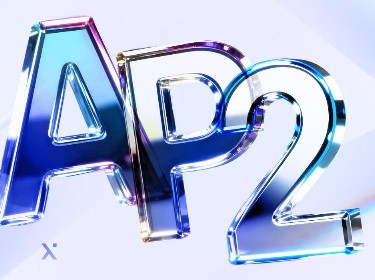The metaverse has made its presence felt in a wide range of industries, the education sector being no exception. The technology is slated to make learning and teaching more engaging, effective, and extraordinary — and now is the time to find out how.
Though 2022 was a bumpy ride, it still brought some momentous breakthroughs and groundbreaking tech novelties that are here to stay and will keep evolving in 2023 and beyond.
Undeniably, it is the metaverse that stole the show. The phenomenon caused a sensation and was even nominated for the word of the year by the Oxford English Dictionary, coming in second place and losing only to “goblin mode”.
But the metaverse is not just a buzzword. In fact, the technology has demonstrated a transformative capacity and its global market size is expected to reach $678.8 billion by 2030, which proves that its popularity and adoption will continue to rise.
Noteworthy is that the application of the metaverse to education has sparked a particular interest. Some believe that it can make learning and teaching more captivating, efficient, and more enjoyable.
Check out this article to understand how.
What are the benefits of using the metaverse in education?
![]()
The metaverse can become a real game-changer for the education sector, bringing a host of significant benefits, the most outstanding being immersive learning experiences, greater learning speed, an inclusive environment, and an ability to acquire hands-on experience.
The metaverse provides an immersive and multisensory learning experience
With the metaverse, students can engage and connect with their peers and teachers in a 3D world, set out on exciting journeys to historical landmarks, carry out chemistry experiments, and explore many other tremendous opportunities in virtual space.
As a result, students can acquire a better understanding of new topics and subjects, examine different objects in greater detail (e.g. the structure of an atom or a part of a human body), and have more fun while learning.
The metaverse facilitates greater learning speed
Virtual environments can boost the speed of learning. According to a study conducted by PwC, those employees who were trained with the help of VR technology completed their training four times faster than those who trained in the classroom setting and 1.5 times faster than with e-learning.
The reason for this is that various gamification techniques coupled with captivating 3D elements and simulations keep learners engaged and fully focused on the material and allow them to absorb the information much better.
The metaverse advocates the philosophy of inclusive education
One of the best things about the metaverse in education is that the technology provides all learners, without exception, with the same opportunity to get involved in the learning process. Children with special needs, therefore, have the chance to study and engage in learning activities together with general learners and interact in comfortable ways.
As well as this, present-day VR equipment is being designed to cater to the needs of students with disabilities and empower them to enter and engage smoothly with the metaverse world.
The metaverse empowers learners to acquire practical experience
With the metaverse, students have the chance to gain hands-on experience in a safe environment, which would be hazardous or challenging in a real-world setting. For instance, one could perform complex chemical experiments or practice transport management skills in the metaverse space without doing harm to themselves or others.
Get insights into how different technologies can shape the education sector
What are the most prominent applications of the metaverse in education?
![]()
Even though the metaverse has yet to gain widespread acceptance in the education sector, there are already viable and game-changing solutions that could contribute to more engaging and effective learning and teaching.
Let’s explore some of the most prominent applications of the metaverse in education and see what makes them special.
Virtual classes
Powered by the advances of modeling and rendering technologies, including augmented and virtual reality development and XR, the metaverse enables the development of sophisticated 3D virtual classes where participants are not bound by the physical or formal constraints imposed by educational establishments.
Virtual classes allow students and teachers to create their own unique avatars and interact with one another in a virtual space, do different activities in breakout rooms, play educational games, visit libraries, marine worlds, or historical sites, meet with distinguished speakers and lecturers, and attend their courses in the metaverse.
Importantly, metaverse virtual classrooms help unite students from different geographical locations. For example, the cutting-edge Kenya-KAIST virtual campus, which will be launched in September 2023 in the Konza Technopolis, is aiming to create a metaverse where students from across the globe can enjoy an immersive learning experience and enroll in a host of campus activities.
Virtual experiment learning
With the metaverse, it will be possible to conduct experiments in different subjects (physics, chemistry, biology, engineering, etc.) and obtain experiential skilling opportunities in a simulated environment. Novartis, for instance, a global healthcare company, applied VR advances to train its employees on best practice production and aseptic procedures for a new leukemia treatment.
The metaverse removes the need to obtain and operate with costly, heavy, or hazardous equipment. So, students and their instructors can safely and comfortably work in a virtual laboratory or operating theater and carry out complex operations: repair a car or engine in a virtual garage; experiment with chemicals and substances without having any fear that they will blow up; create, showcase, and collaborate on prototypes.
Gamified learning environments
The importance of gamification elements in the education sector cannot be overestimated. The market for global game-based learning is projected to hit $32.6 billion by 2027, meaning that students and teachers have yet to benefit from many more novel gamification strategies and techniques.
The metaverse’s gamified, immersive nature encourages even greater student participation and motivation and guarantees their satisfaction with the entire learning process.
Importantly, educational games in the metaverse bolster and maintain students’ competitive spirit. The most active learners can be rewarded with different awards or badges, which will encourage them to stay focused on learning and complete their assignments.
Progress tracking and tailored learning resources
To process, store, and transmit learning data, the metaverse relies on technologies such as edge, cloud, and distributed computing. Plus, the integration of artificial intelligence and big data into the metaverse enables large quantities of student information to be analyzed and traced, producing useful insights.
All these capabilities make it possible for teachers to access and analyze virtual student data to customize instructions and tasks for each student and see where they excel or lag behind. This data also helps track overall student progress, review attention levels and sentiment metrics, and evaluate the effectiveness of their learning methods.
Explore how the metaverse can upend the eCommerce sector
Aspects to consider before implementing the metaverse in education
Even though the metaverse can offer the education sector many benefits and opportunities, certain aspects of it prevent the technology from being widely adopted by educational establishments. These include high equipment costs, data privacy, and addiction concerns.
High equipment costs
VR hardware is costly and not everyone can afford to buy it, meaning that some students will be unable to enroll in virtual classes. Plus, given the rapid pace of technological development, it is likely that any equipment purchased will become outdated and obsolete within a short time.
However, if the metaverse is accepted as a viable solution for learning and teaching, the equipment in all probability will become more affordable, enabling more learners to participate in this new educational format.
Data privacy and security concerns
Once in the metaverse, teachers and students will be required to submit substantial personal information such as their facial images, physical condition, and metrics regarding student performance and personal characteristics. In addition, both educators and learners run the risk of having their materials and content plagiarized in the metaverse space.
Having said that, the entire Web3 world is still nascent, meaning that proper and sufficient regulation regarding the protection of user data is yet to be established. As far as IP protection in the metaverse is concerned, it is advisable to ensure content traceability with the help of leading-edge tools such as NFTs and blockchain.
Check out how PixelPlex delivered this AI-powered intellectual property protection service in Web3
Addiction
Learners who experience difficulties with self-control may get too involved in a virtual world and become unwilling to switch back to real life. The reason for this is that immersive virtual environments may seem too perfect and entertaining, causing learners to ignore or give up on real-life communication.
To prevent this from happening, educators as well as parents need to put limits on the amount of time learners spend in the metaverse and explain all the detrimental effects students may face if they exceed the limit.
Closing thoughts
The metaverse can have a substantial impact on the education domain and open up a myriad of exciting opportunities for both educators and students.
If implemented thoughtfully and correctly, the technology could enhance or even completely transform the overall learning experience. It could also facilitate greater learning speed, establish an inclusive environment for everyone, and make it possible to acquire practical skills in non-hazardous conditions.
If you wish to develop your own education solution in the metaverse, reach out to our experienced metaverse development team. We can devise a strategy for a smooth metaverse transition, think up and design a fully-fledged metaverse economy, and develop a robust architecture for your metaverse solution.




